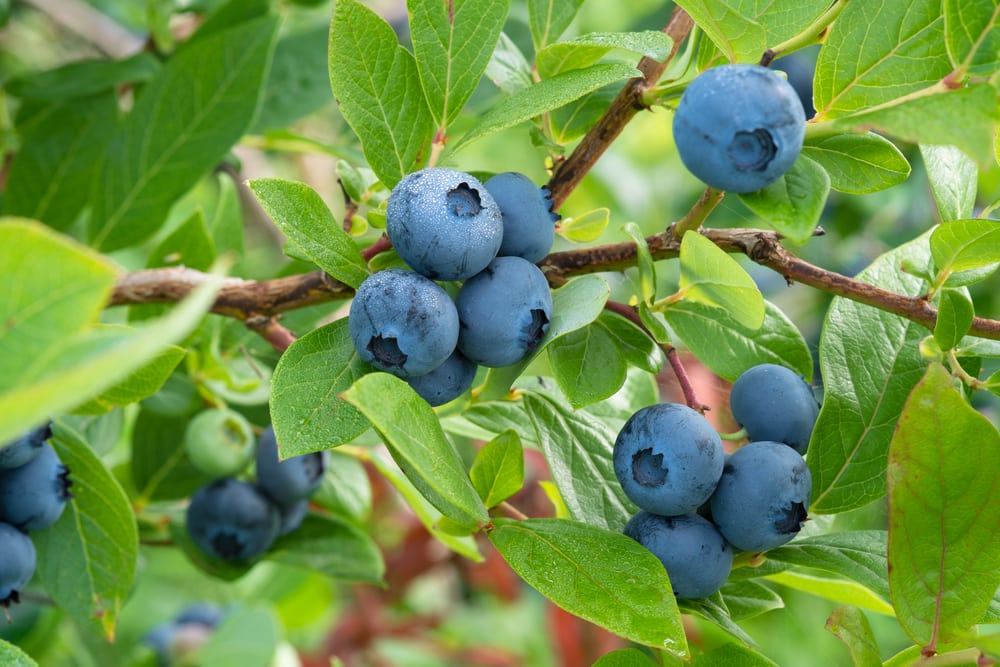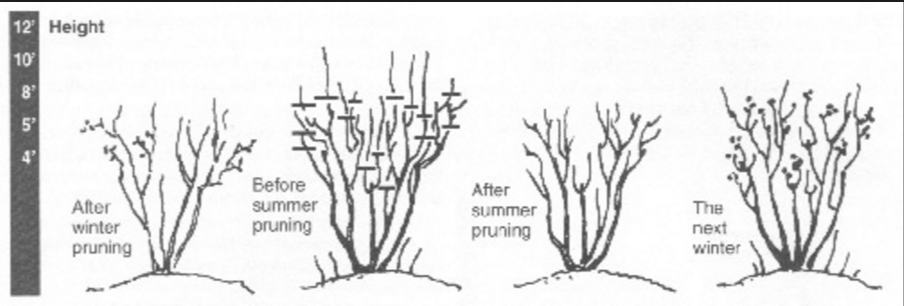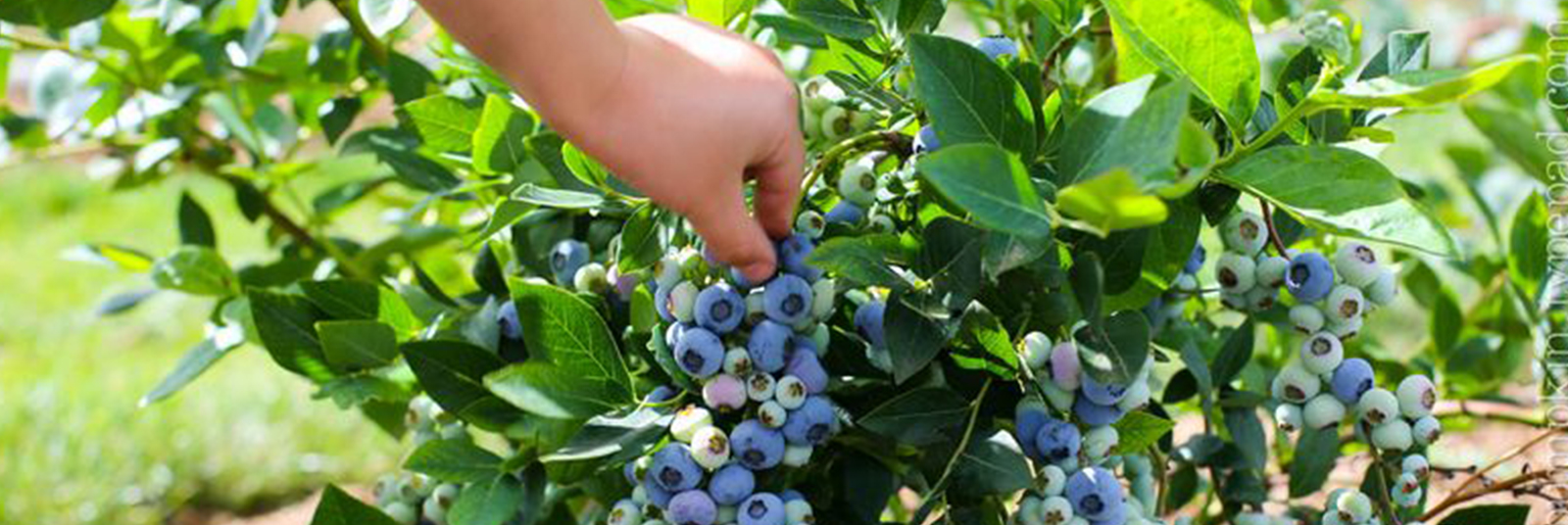
Blueberries, Fruit, How to, Local, Tallahassee, Tips
Blueberries: The Panhandle Guide
Why buy them?
Blueberries are a wonderful native fruit to grow here in North Florida. There are wonderful varieties that produce large sweet berries that are tasty, nutritious, and a beautifully ornamental addition to any home landscape. If you’re looking to produce the best fruit and healthiest plants there are a few things you should know that will give you the tastiest freshest fruit right at home!Which ones to buy?
Rabbiteye Varieties (Vaccinium virgatum) -Large sweet fruit like what you buy in the grocery store ripens June and July -Tallahassee Nurseries recommended best pick for home gardens in North Florida -Plant at least 3 different Rabbiteye varieties together for best pollination, the more varieties the better to ensure good fruit set -Large growers 6’-12’ tall by 6’-10’ wide over time Southern Highbush Blueberries (Vaccinium hybrids) -Large sweet fruit like what you buy in the grocery store ripens earlier than Rabbiteyes -Flowers early and thus is highly susceptible to freeze damage in the panhandle -Requires more inputs in soil amendments and fertilizer -Smaller growers maturing to half the size of Rabbiteye varieties -Plant at least 3 different Southern Highbush varieties together for best pollination, the more varieties the better to ensure good fruit set Wild Blueberries -Many different species with varying growth sizes and fruit quality -Used mostly as ornamentals or for wildlife -Dwarf Blueberry (Vaccinium darrowii) is a notable species that grows low with delicate leaves and small, seedy, but very tasty fruitsWhere to Plant?
-Best fruiting requires at least 5 hours of direct sun -Soil pH is very important for blueberries and should fall between 4.0 and 5.5 -Generally if azaleas and camellias grow well in an area then blueberries will grow well too -Soil tests can be done before planting and sulfur added if pH is too highHow to Plant?
-Best planted mid-December thru mid-February but can be planted anytime -Blueberries need relatively high amounts of organic matter in the soil -Use fine ground pine bark and or peat moss to create good blueberry soil -Blueberries need good drainage, if you have heavy clay soils use lots of fine ground pine bark mixed with the native soil to help water drain properly -Do not put fertilizer in the planting hole -Mulch thick, 3 inches of pine bark or pine straw to keep moisture in, roots cool, and maintain soil pH at an acidic level -Strip and or fruit off when planted to divert energy the first year away from fruit production and into root growth (I know this sounds painful but future growth will improve dramatically)How to Maintain?
Watering -Watering the first year is absolutely critical for healthy plant establishment, nursery plants are watered daily, once planted they need time to develop branched root systems before they will be drought tolerant -Apply at least 1 gallon of water slowly and directly to the root ball every 2 days for the first Spring and Summer -Apply at least 1 gallon of water slowly and directly to the root ball every 4 days for the first Fall and Winter -Only rain over ¼ inch counts as a watering -The second year watering needs will reduce, water when leaves first show signs of watering -Established blueberries require about 1 inch of rain per week while fruit is on the plant for a good harvest -Those who water from wells should check the pH of their well water, it is likely basic and could raise the pH of their soil which will need to be corrected yearly with soil acidifiers Feeding -Fertilize blueberries with an acidifying fertilizer, those listed for azaleas and camellias are ideal -Tallahassee Nurseries recommends using Holly Tone, an organic fertilizer that feeds your plants and builds healthy soil over time -Apply fertilizer in April, June, August, and October for the strongest plants -Apply Holly Tone in the amount of 1 cup per foot of shrub diameter up to 3 feet -Apply Holly Tone in the amount of 2 cups per foot of shrub diameter for 4 feet or greater -Spread fertilizer evenly over a circle 2 feet across for first year plants, increase the size of this circle 1 foot each year up to a circle 8 ft across -Holly Tone is non-burning and can be left on the surface of the ground until rain soaks it in or watered in immediately with a sprinkler Pruning -Pruning yearly maintains healthy plants that produce more fruit -Pruning should be done as soon as fruit is harvested -Young plants should have small twiggy growth removed -Once plants are 4 years old begin yearly removal of about ¼ of the oldest canes (canes are vertically growing branches that grow from the roots) by cutting them as close to the ground as possible -A good way to tell which are the oldest canes; the tallest ones are usually the oldest -The top 6 inches to a foot of the entire plant may also be removed to stimulate new growth and maintain size -NOTE: these suggestion on pruning are intended for Southern Highbush and Rabbiteye varieties. Wild varieties should be allowed to simply grow as they wish, some light pruning for shape is also ok. Reading all this information at once can make blueberries seem a bit daunting but I assure you they are one of the most rewarding crops for our area. Keep in mind that of all these instructions most are done one at a time and months if not years apart. As always the staff here at Tallahassee Nurseries is always here for you. We are here to help you on your gardening journey. Maintain a simple maintenance schedule, take each step singly as it comes, and you too can have bounty in your yard!
References
http://edis.ifas.ufl.edu/ep391 – Shrub establishment in Florida
https://edis.ifas.ufl.edu/mg359 – Blueberry page
Reading all this information at once can make blueberries seem a bit daunting but I assure you they are one of the most rewarding crops for our area. Keep in mind that of all these instructions most are done one at a time and months if not years apart. As always the staff here at Tallahassee Nurseries is always here for you. We are here to help you on your gardening journey. Maintain a simple maintenance schedule, take each step singly as it comes, and you too can have bounty in your yard!
References
http://edis.ifas.ufl.edu/ep391 – Shrub establishment in Florida
https://edis.ifas.ufl.edu/mg359 – Blueberry page Love blueberries?
We toured Green Meadows U-Pick farms that are full of the same rabbiteye blueberries we offer here at Tallahassee Nurseries.
Take a watch and you’ll be sure to want to pick some of your own!


